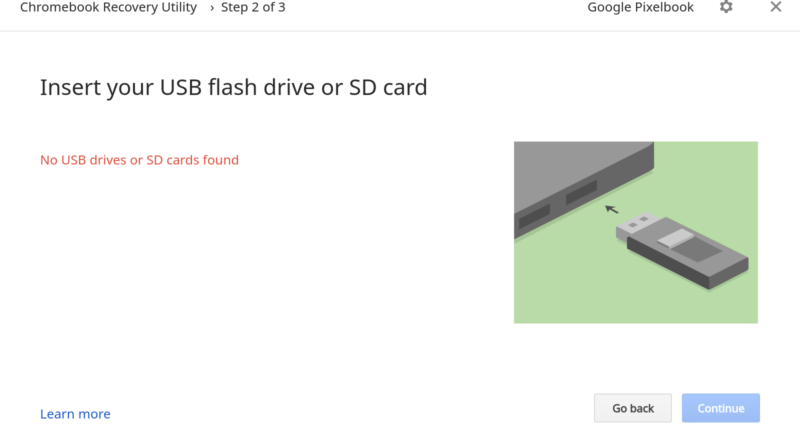
6.1 Chrome OS versions including the firmware update. Just press and hold the power button until the device shutdown again, press and hold the power button until it turns on. It is effortless to reboot. Rebooting solves many issues, especially those that are related to software. The simplest method to fix the chrome OS missing and damage is to reboot your Chromebook.
6.2 Things to know about the update processCopy Link. Chromebooks, like MacBooks and Windows laptops, rely on software to. Restoring your Chromebook to factory settings can also solve Chrome OS is.Your Chromebook should then boot with a message saying Chrome OS is missing or damaged. Solution 2: Factory Reset Your Chromebook. Rebooting a computer can always fix computer issues especially software issues. The message will either read Chrome OS is missing or damaged or Please insert a recovery USB stick or SD card.How to Fix Chromebook Chrome OS Is Missing or Damaged Solution 1: Reboot Your Chromebook.
Chrome Os Missing Or Damaged Install The UpdateAt
You should then go through the operating system’s installation process. 6.3 Deciding whether to install the updateAt the Chrome OS is missing or damaged screen, insert the SD card or USB drive containing Chrome OS. If your problem is not worked out with above solution and information, please contact ASUS customer service center for further information. Above contents are from Google official website, you can also refer to Google Help Center for more details. Please insert a recovery USB stick or SD card into the Chromebook, learn more about How to Recover the Chromebook.
To summarize: There exists a practical attack against TPM-generated RSA keys, but it doesn't allow large-scale exploitation of Chrome OS devices. At the current point in time, it means TPM-generated RSA keys can't be broken at large scale, but targeted attacks are possible. Note that this figure might drop as more researchers look at the attack. Currently known exploits are computationally expensive specifically, for RSA keys of bit size 2048, the researchers give an estimate of 140.8 CPU years to break a single key. The researchers who found the vulnerability have published high-level information here.
However, note that off-device brute-force attacks are only advantageous against strong passwords - weak passwords are still less expensive to brute-force against the TPM regardless of whether it runs vulnerable firmware or not.Hardware-backed encryption keys / certificates. The vulnerability allows the attacker to brute-force the encryption key (bit size 2048) off-device. The page Protecting Cached User Data describes this in more detail.
You can check key sizes for certificates backed by TPM keys at chrome://settings/certificates.Chrome OS Verified Access allows network services to verify client device integrity and identity. The bit sizes supported by Chrome OS for TPM-backed keys are 1024 or 2048. The bit size of generated and imported keys depends on parameters. The vulnerability allows attackers to determine the private key. These keys are typically accompanied by a certificate and then used in network authentication, such as WPA2-EAP, HTTPS client authentication, etc.
This measure guarantees adequate protection of encrypted user data for users that use strong passwords. Users were automatically upgraded to the new scheme behind the scenes without user-observable effects. Attackers can exploit the vulnerability to break an "Attestation Identity Key", which allows them to impersonate a legit device from an endpoint of their choice.In Chrome OS M60, we strengthened Chrome OS user data protection using the scrypt password hashing scheme to act as a second line of defense even in case the brute-force protection afforded by the TPM is lost.
If the tpm_version entry is absent, this is likely because you are running an old Chrome OS version which doesn't report this information. Affected TPM firmware versionsYou can check the TPM firmware running on your device by looking at the firmware_version line of the tpm_version entry in chrome://system. The only supported path to restore the designed security strength for these features is to update TPM firmware.See below for advice on whether and when to update TPM firmware.
Chrome Os Missing Or Damaged Code Names And
cyan - Acer Chromebook R11 (CB5-132T / C738T) auron-yuna - Acer Chromebook 15 (CB5-571) auron-paine - Acer Chromebook 11 (C740) Here is the complete list of affected devices with code names and marketing names:

kip - HP Chromebook 14 ak000-099 / HP Chromebook 14 G4 kip - HP Chromebook 11 2200-2299 / HP Chromebook 11 G4/G4 EE kip - HP Chromebook 11 2100-2199 / HP Chromebook 11 G3 hana - Lenovo N23 Yoga/Flex 11 Chromebook
ultima - Lenovo ThinkPad 11e Chromebook 3rd Gen (Yoga/Clamshell) setzer - HP Chromebook 11 G5 / HP Chromebook 11-vxxx nyan-blaze - HP Chromebook 14 x000-x999 / HP Chromebook 14 G3 nyan-big - Acer Chromebook 13 (CB5-311) lars - Acer Chromebook 14 for work (CP5-471)
veyron-jerry - Positivo Chromebook CH1190 veyron-jerry - NComputing Chromebook CX100 veyron-jerry - Epik 11.6" Chromebook ELB1101 veyron-jerry - eduGear Chromebook K Series
veyron-mighty - Nexian Chromebook 11.6-inch veyron-mighty - MEDION Chromebook S2015 veyron-mighty - Lumos Education Chromebook veyron-mighty - eduGear Chromebook M Series
wizpig - PCMerge Chromebook PCM-116T-432B wizpig - Haier Convertible Chromebook 11 C winky - Samsung Chromebook 2 11 - XE500C12 veyron-minnie - ASUS Chromebook Flip C100PA veyron-mighty - Sector 5 E1 Rugged Chromebook



 0 kommentar(er)
0 kommentar(er)
